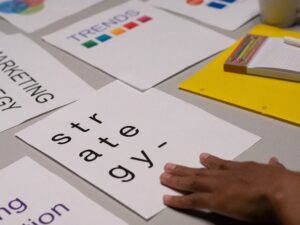Mobile SEO is an essential and often overlooked part of search engine optimization.
You must optimize your website for these users in a world where they use their mobile and desktop devices to access the internet.
Improving mobile SEO is essential as the world continues to go more on mobile.
We have this Mobile SEO guide to keep your mobile SEO strategy on track.
This mobile SEO guide will discuss everything you need about mobile SEO strategy, from optimizing your website for the mobile-first index to creating a responsive design to keep users engaged.
What is Mobile Search Engine Optimization?
Mobile SEO is optimizing a website for users accessing it on a mobile device, such as a smartphone or tablet.
For better results, you can perform mobile SEO best practices.
One practice of mobile SEO is to design your site for smaller screens. It means ensuring that the layout is easy to read and navigate and that the buttons and links are large enough to be easily clicked on a small screen.
Another thing you can do to mobile optimization is your site for speed. Mobile users often look for information quickly, so it’s essential to ensure your site loads fast on a mobile browser of a user’s device.
Finally, you can ensure your mobile SEO content is easily read and navigated on mobile phones. It means using short paragraphs, bullet points, and clear headings to make it easy for users to find the information they want.
You can ensure mobile optimization of your website by following these tips so that your mobile visitors will have a positive experience.
Why is it important?
Mobile SEO helps users have a positive experience when visiting your website on a mobile phone. It can also help enhance your site’s search rankings.
More people are Searching through their mobile
More people are using their mobile to search the internet than ever before.
There are several reasons why this shift is taking place.
First, mobile devices are becoming increasingly powerful and capable of running sophisticated applications. It means that people can now do more with their phones and tablets than ever, including searching the internet.
Second, the cost of data plans is falling in many parts of the world, making it more affordable for people to use their mobile devices to go online.
Third, the availability of high-speed mobile data networks is increasing in many parts of the world. It means that people can now access the internet at speeds comparable to those of fixed broadband connections.
Fourth, the number of people who own smartphones and tablets is increasing. In many parts of the world, these devices are becoming the primary way people access the internet.
Due to all of these factors, it is no surprise that more people are using their mobile devices to search the internet. This trend might continue in the years to come as mobile devices become even more powerful and ubiquitous.
People share and revisit sites that are mobile-friendly
79% say they’re more likely to revisit and share a mobile site if it’s easy to use – (thinkwithgoogle)
It’s no doubt that people are spending more and more time on their phones nowadays. Between checking emails, social media, schoolwork, Netflix, or websites, people are constantly on their phones (On average 3 hours a day.)
Mobile empowers people to be nimble as they can organize themselves as much as they like knowing their smartphone is there.
A smooth mobile user experience goes a long way in desiring and building a stronger relationship.
Google’s Mobile-First Index
Google is constantly releasing updates, one of which is the Mobile-first Index.
Its update means that Google will index your website according to how it appears on mobile devices rather than desktop devices.
This update is a significant change, and optimizing your website for mobile devices is essential if you want to be in Google search results ranking.
What is Google’s Mobile-First Index?
Google announced the mobile-first index in 2016, but it wasn’t until 2018 that the search engine began to roll it out.
It is Google’s way of moving towards a more mobile-centric world. In the past, the desktop version of the website is the primary source of information for indexing and ranking.
However, with more people accessing the internet on mobile devices than desktop users, Google has shifted its focus to a mobile-friendly website.
With the mobile-first index now in effect, how your website appears and functions on mobile devices is a key ranking factor.
You should do mobile optimization on your website, but it doesn’t mean your website needs to be 100% mobile-friendly to rank.
Implementing these changes will improve your mobile site ranking and provide a better user experience on a mobile device. And that’s what mobile SEO is all about.
More sales are achieved through mobile
Although most purchases still happen in-store, mobile’s influence over these purchases is rapidly growing.
According to Deloitte, 64 cents of every dollar spent in retail stores is influenced by digital, and we know mobile is a significant driver. 76% of people who search on their mobiles visit a business within 24 hours, and 28% result in a purchase.
It is when the consumer chooses you; a shopper would go online, browse a catalogue, or walk the store aisles.
The point is that a shopper interacts with channels independently. But the rise of mobile has changed this picture.
60% of internet users shop on one device but finish on a different one, and 82% of mobile users say they consult their phones for purchases they’re about to make in a store.
They look up information, get ideas, and make decisions from their smartphone anytime, anywhere.
Review your Mobile Traffic
For your mobile SEO, you should constantly review mobile traffic. Google Search Console is a significant way to check how much mobile traffic your website is getting.
To do this, log in and go to the “Search Traffic” section. You’ll find a breakdown of your traffic, including tablet, mobile, and desktop.
Checking this data will give you a good idea of how much mobile traffic you’re getting. If it’s a lot, you know you need to ensure your website is as mobile-friendly as possible.
You can find any errors in the Google search console that may prevent your site’s mobile optimization.
Fixing these errors is essential for your mobile SEO and ensuring that your website can be enjoyed and accessed by as many people as possible.
How to check if your site is Mobile-Friendly using different Tools
Checking if the website is mobile-friendly is crucial in mobile SEO because it can help ensure that your site is accessible to an extensive range of users. Optimizing your site for mobile devices can also help improve your search rankings.
There are a few different tools that you can use to check if your website is mobile-friendly.
- Google mobile-friendly test
- Page speed insight
- Bing mobile-friendliness tool
- Mobi ready checker
These are just the tools I tried that are working for mobile SEO; you can add others if you think they are working correctly and is helpful to the user.
Google Mobile-Friendly Test
If you want mobile optimization of your website, one of the best things you can do is use Google’s Mobile-Friendly Test tool. This tool will analyze and tell you how your website performs on mobile devices.
To use the tool, enter your website’s URL into the field provided.

Google will then analyze your website and provide you with a report.
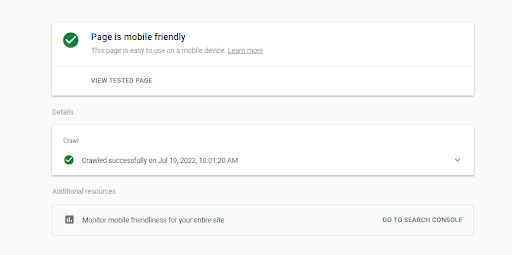
The result also includes when was your website crawled.
If your website is not mobile-friendly, Google will provide you with some steps that you can take to improve its performance on mobile devices. These steps may include optimizing your website’s design or enhancing its content.
Page Speed Insight
It’s significant to make sure mobile page speed. Page Speed Insight is a tool that measures the speed of your website on different devices. Page Speed Insight can help you identify areas where your website needs improvement.
To use Page Speed Insight, enter your website’s URL into the tool and click “Analyze.”

Page Speed Insight will then provide you with a report that includes your website’s speed on different devices and suggestions for improving your website’s speed.
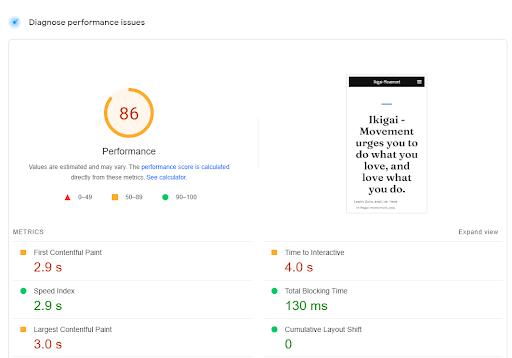
Improving your website’s speed is important for several reasons:
- Faster mobile sites provide a better user experience.
- Faster mobile sites use less bandwidth, saving you money on your hosting bill.
- Faster mobile sites rank higher in search engines.
Bing Mobile Friendliness Test Tool
Bing has a Mobile Friendliness Test Tool that allows you to test your website’s mobile-friendly.
To use the tool, enter your website’s URL into the field and click “Test”.

It will then analyze your website and report on its mobile-friendly features.
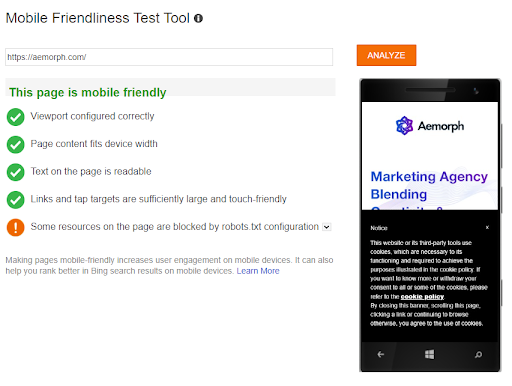
The report will include a list of things Bing thinks you can do to improve your website’s mobile-friendliness. Bing also provides a link to a page with more detailed information on each item.
Mobi Ready Checker
Mobi Ready Checker is a great tool to help you assess your site and ensure it meets all the necessary criteria.
Enter your URL, and Mobi Ready Checker will give you a report on how well your site performs.

Once the tool is done analyzing the website, it will show how it appears on different tiers of phone.
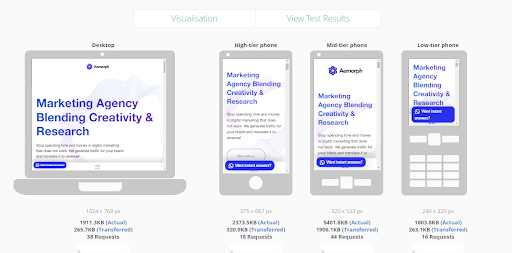
It is a great tool since not everyone is not using the same type of phone. Using this, you can identify what areas in your website you need to improve depending on the type of phone you want to target.
It’s essential to keep an eye on your mobile traffic and ensure that you provide a positive user experience.
Now that you know how to check if your website is mobile-friendly or not, we can now proceed on how to optimize it.
How to Optimize your Website to become Mobile Friendly
As internet users continue to grow, so does the number of people using mobile devices to access the web. It led to an increase in the importance of mobile SEO.
Mobile users are looking for quick, easy-to-read content relevant to their needs. Make sure your website’s content is clear and concise, and focus on creating mobile-friendly headlines and formatting.
There are things you need to do to optimize your website to be mobile-friendly.
Make sure that your content can be crawled by search engines and are Indexable.
You must ensure that your content is indexable and crawlable in mobile SEO.
First, have a responsive web design. It means that your website will adjust to fit the screen size of the person viewing it, whether they’re using a laptop, tablet, or smartphone.
Google prefers responsive design, so you must take care of your mobile SEO. If designed not responsively, it will be much harder to crawl and index your mobile content.
Second, make sure that your website’s code is clean and well-organized. Use proper nesting of elements and use comments to explain your code.
Third, use proper file names and alt tags for all of your website’s images. It will help search engines understand your images and how they relate to the rest of your content.
Maintain a Fast Mobile Site Speed
Mobile users are often on the go, which means they don’t have time to wait for slow-loading web pages.
Use Google’s PageSpeed Insights tool to test your website’s speed and make the necessary changes to improve your mobile SEO.
Keep your website’s load time fast in a mobile version.
A recent study showed that the average mobile website load time is 19 seconds, but users expect a mobile page to load much faster. 40% of users will abandon a website if it takes more than 3 seconds to load.
If your website loads longer, you risk losing potential customers and revenue.
There are ways to improve your website’s load time and efficiency on all devices.
- Maintain a fast server response time
- Use async and defer tags when loading JavaScript and CSS files
- Optimize image sizes and file types
- Minimize the use of plugins
- Use a content delivery network (CDN)
Have A Responsive Design
A responsive web design is a key to a mobile-friendly site helping mobile SEO. A responsive design means that your website will resize and reformat itself to look fabulous when viewed no matter what device.
It is essential because people use more mobile devices than ever to access the internet.
There are various things to having a responsive site.
First, you must ensure that users can view your website on both mobile and desktops. You need to test it out on as many different devices as possible.
Second, you must ensure that your website loads quickly on all devices. People are impatient and will likely leave if your website takes too long to load.
Your website should be easy to navigate on all devices. It means having large buttons and links that users can easily click on.
Making your website mobile-friendly is vital if you want to stay ahead of the competition.
More and more people are using mobile devices to access the internet, and if your website is not mobile-friendly, you will likely lose out on potential customers or clients.
Optimize your Content for Mobile
Do Keyword Research
Performing keyword research is essential in mobile and desktop SEO optimization, as you need to know what people search for in businesses like yours.
You can do mobile keyword research if you want your website to be more visible on mobile search engine results pages.
One of the most important is to make sure you’re using the “mobile” option in SEMRush.
It will allow you to focus on mobile keywords that are typically shorter and have less competition than traditional ones.
Additionally, it’s essential to focus on the number of words in your content. Mobile users are more likely to search for concise information, so making sure your content is straightforward, and the point is essential.
Finally, ensure to add alt text to your images and videos. It will help ensure that your content is accessible; you may not be able to see visuals as quickly as desktop users.
Optimize Title and Meta Description
One of the essential things to optimize your website for mobile SEO is to ensure your title, and meta descriptions are well-written and keyword-rich.
Using keywords in your title and meta descriptions is essential in desktop and mobile SEO. It is because mobile users are more likely to search for specific terms when looking for something on their phones.
We do this for the desktop version, but we’ll optimize titles and meta descriptions properly to show keywords on mobile searches with fewer words than in desktop searches.
If you want to appear in the mobile search engine results for those keywords, you need to ensure to include them in your titles and meta descriptions. However, it would help if you were careful not to stuff too many keywords into these fields.
Suppose you stuff your title and meta descriptions with too many keywords. In that case, it will not only turn off potential mobile visitors but will likely result in your website being penalized.
The best way to optimize your title and meta descriptions for mobile SEO are to keep them short and to the point. Use only the most relevant keywords and place them at the beginning of your title and meta descriptions.
You’ll be well on mobile SEO if you follow these tips. And as a result, you’ll likely see an uptick in traffic and engagement from these users.
Make your Content Easy to Read on Mobile
With so much time spent on mobile devices, optimizing your website for readability on smaller screens is essential. It is where mobile search engine optimization (SEO) comes in.
Mobile SEO is of optimizing your website for mobile devices. It includes ensuring your website loads quickly, is easy to read and navigate and has relevant and targeted content.
Making your content easy to read on mobile devices is vital for two reasons: first, it makes your content more accessible to a broader audience; second, it can improve your mobile SEO.
There are things you can do to ensure your content is readable on the mobile version:
– Use short paragraphs: Breaking your content into shorter paragraphs makes reading on a small screen more manageable.
– Use bullet points: Bullet points help break up your content and make it easier to scan.
– Use headlines and subheadings: Headlines and subheadings help structure your content, making it easier to read.
– Use images: Images can help break up your content and make it more visually appealing.
– Use videos: Videos are a great way to engage your audience, and users can quickly view them.
By making your content easy to read on mobile devices, you’ll be able to reach a wider audience and improve your mobile SEO.
Optimize for Local SEO
If your business relies on local customers, you need to optimize your website for local SEO.
1. Make sure your website is mobile-friendly.
It is essential for two reasons. First, more and more people are doing mobile searches. You’re missing out on many potential customers if your website isn’t mobile-friendly.
Second, Google gives preference to mobile-friendly websites regarding ranking in search results. So if you want to make sure your website is visible in search results, you need to make sure it’s mobile-friendly.
2. Optimize your website for local keywords.
Include relevant keywords, titles, and tags that reflect your location in your website content that will appear in local searches. It will help Google understand that your website applies to people searching for businesses in your area.
3. Create citations for your business.
You can create citations by submitting your business to online directories and review sites. Citations are mentioning your business name and address on other websites. The more citations you have, your website will likely appear in local searches.
4. Get reviews from customers.
Customer reviews are another critical factor in local SEO. Google uses reviews to help determine how relevant and trustworthy a business is. So if you want your website to appear in mobile search results, ensure you get positive customer reviews.
5. Build backlinks to your website.
Google views backlinks as a sign of trustworthiness and authority. So the more backlinks you have, the better your chances of ranking in search results. You can build backlinks by creating high-quality content and sharing it on social media and other websites.
Avoid pop-ups
Pop-ups can be very annoying to website visitors and negatively impact your site’s mobile SEO.
That’s why it’s generally best to avoid using pop-ups on your website.
There are a few reasons why pop-ups can hurt your SEO.
1. Pop-ups can be intrusive and interfere with the user’s experience on your site.
2. Pop-ups can be for malicious purposes, such as displaying advertising or phishing scams.
3. Pop-ups can cause your site to be penalized, which can negatively impact your traffic and rankings.
4. Pop-ups can be blocked by browsers and other software, making them less likely to be seen by potential visitors.
5. Overall, you should avoid pop-ups to ensure a positive user experience for your site’s visitors.
Use Schema Mark-up
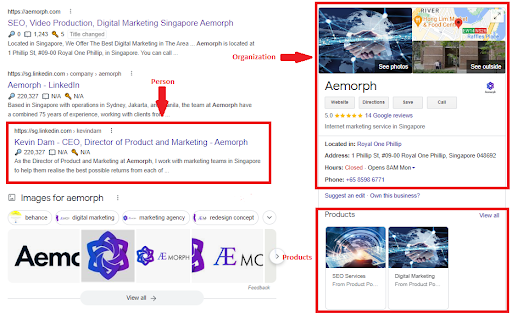
As mobile devices become increasingly prevalent, businesses need to optimize their mobile sites for mobile users. A critical aspect of mobile optimization is Schema markup.
A schema is microdata that helps search engines understand the content on your website. It marks various information, such as reviews, events, and people.
Schema markup is significant for mobile users as it can help provide them with relevant results even if they don’t have an exact query and help improve your click-through rate from the mobile search results.
Use the Viewport Tag
As a mobile user, have you ever been frustrated with how a website looks on your device? Maybe it’s too small to read, or you must scroll horizontally to see the entire web page. Well, that’s where the viewport tag comes in.
The viewport is a meta tag that tells the browser how to scale a website on a mobile device. With the viewport tag, you can set the width and height of your content and scale it to fit different screen sizes.
Including the viewport tag is relatively simple. You need to do is add the following code to the head of your HTML document:
This code tells the mobile device to set the viewport to the device’s width and initial scale to 1.0. You can adjust these values as needed to fit your content.
If you don’t include the viewport tag, your content will be automatically scaled to fit the screen, leading to the cut-off of some content or not being viewable.
Don’t Block CSS, Java Scripts and Images
CSS is how you define the look and feel of your website. It includes things like font size, colours, and spacing. By making your CSS responsive, you’re ensuring that your website will look good on any device, no matter the size.
Ensure not to block CSS as mobile browsers need to be able to access your CSS to render your mobile site pages correctly.
Optimize your Java Scripts and images as it helps ensure correct and accelerated mobile pages on all devices.
Mobile browsers can often block Javascript and images, making your website appear broken or unresponsive. Don’t block these elements in your mobile site’s code to avoid this.
Build Sitemaps
Sitemaps play an essential role in making your mobile-friendly website. They help crawl and index your content, making it easier for users to find what they’re looking for.
Sitemaps also provide valuable metadata about your mobile content, such as when it was last updated, how often it changes, and any alternate versions of the mobile page.
Creating and submitting a sitemap is an excellent way to ensure that all your pages on your website are indexed. It’s also a great idea to keep your sitemap up to date as your content changes over time.
You can use a tool like the XML Sitemap Generator or manually.
Once you have a sitemap, you can submit it to Google Webmaster Tools and Bing Webmaster Tools. It will help them find and index your content more quickly and efficiently.
Consider Voice Search
Voice search is a convenient way for users to find information on the go, and it’s becoming more popular every day, so optimizing your site for this type of traffic is essential.
To ensure your site is ready for voice search, ensure that all your content is easily accessible and easy to understand.
Conclusion
It is important to make your website to be a mobile-friendly site, especially in today’s continuous increase of mobile searches in the world. Surely, you will miss a great opportunity if you are not optimizing your website to be more mobile-friendly. So optimize your site now and improve your traffic drastically!



